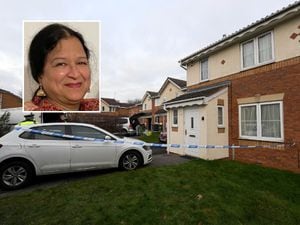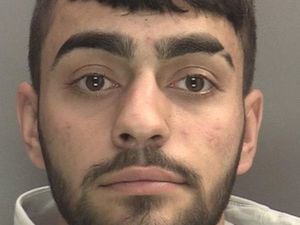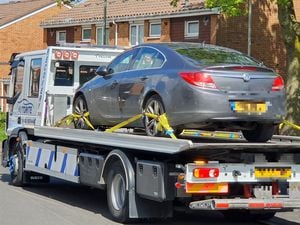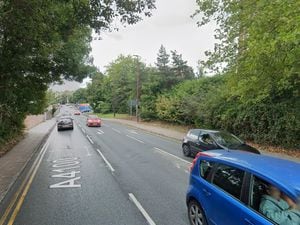Black Country and Staffordshire's most haunted
Mysterious figures appearing in historic homes, Cavaliers lurking around lakes, and Roundheads propping up the bar in old pubs.
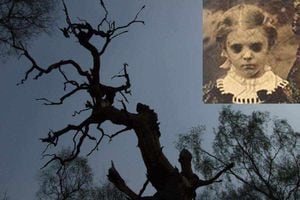
In a modern world seemingly ever-more dictated by science and logic, nothing seems to diminish our appetite for tales about ghostly goings on in our area.
Stories about strange activities around places like Cannock Chase or Dudley Castle have been around since time immemorial, and sceptics would suggest such locations are tailor-made for a fertile imagination.
Historic pubs, which will doubtless have seen plenty of shenanigans over the centuries, also figure heavily in West Midlands folklore, but unusual activities have sometimes been reported in places one would not expect.
For example, when the former cinema in Walsall Street, Wednesbury was being converted into a bingo hall, the workmen were said to have witnessed toilet rolls being hurled around. The caretaker was so disturbed by what was going on he refused to stay in the building.
One common theme seems to be that most of the sightings usually involve figures from the dim-and-distant past.
The English Civil War seems to feature highly in reported supernatural activity. Many of the stories relate to King Charles II's flight from the Battle of Worcester in 1651, with colourful tales explaining why the King's troops continue to stalk our lands.
And it is not just Cavaliers. At the Four Crosses pub in Watling Street, Cannock, there have been tales of a Roundhead soldier roaming its ancient rooms, as well as a broken-hearted damsel called Emily crying in the ladies' toilets.
Dickensian-type characters from Victorian times are also commonly reported: young girls in 19th century dress, Victorian street beggars, well-known figures who ruled the roost.
So are all these tales just figments of our imagination? When Anne Bradford began writing books about ghosts in the early 1990s, she was totally sceptical. But she says meeting people who told her the tales convinced her there must be something to them. "When I look at the people telling me these stories, I know they are telling the truth," she says.
Many of the tales are vague. Why do the beer glasses stick to the wall at the Somerset House pub in Stourbridge, for example? Then there are reports of dark figures being seen at Castle Ring, an Iron Age hill fort in Cannock, along with sightings of a large black cat.
Television presenters such as Derek Acorah and Yvette Fielding regularly trying to get to the bottom of the mysteries. There is also a burgeoning industry of ghost tours of supposedly haunted buildings and sites.
Many of us will search for a simple explanation for all these phenomena, but those who have experienced the incidents tell a different story. But one thing is certain. People will continue to be fascinated by things which go bump in the night.
Station Hotel, Dudley
The website of the Station Hotel in Dudley boasts about the warm and friendly atmosphere that guests are able to enjoy.
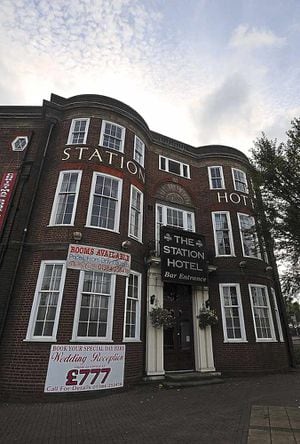
But for many of the people who stay at the hotel, whose previous guests have included Bob Hope and Laurel and Hardy, its main selling point is very different indeed.
The Art Deco building, opposite Dudley Castle, has become a magnet over the years for people with an interest in the paranormal.
One of the biggest draws for those interested in the supernatural is the infamous room 217.
According to researcher Tracy Monger until May 2002, nothing was known about which rooms were haunted, but when a manager slept over in room 217 he got the surprise of his life.
Before going to bed, he hung a football shirt on a hanger over the a wardrobe. But his sleep was disturbed at precisely 3am by a whispering sound in both ears.
He turned over and saw a woman standing in the corner of the room, leaning over the dressing table.
Tracey says: "The woman was wearing a black dress, down to the floor with tight-fitting sleeves to her wrist.
"She had dark hair, scraped back and it was tied into a bun.
"As she was seen, the whispering stopped and when the light was turned on, the woman disappeared. However, when they woke in the morning the football shirt was neatly folded, lying on the foot of the bed."
Tracey adds that a blonde barmaid was changing a barrel in the cellar in 2005, when she heard a man's voice whispering.
"She saw no one but heard footsteps down the corridor outside of the room," she says.
"Another time, she went to get extra beer glasses from the cellar. While carrying a plastic tray full of them, she saw a silhouette of a man about ft tall, he stepped out in front of her and blocked her path.
"She described him as being solid. She said to him, 'George! Do you mind? I have a job here! I've got to get these glasses upstairs!'. He stepped back and as she walked past, she said it was like walking past an open freezer."
George may have been George Williams, a one-time manager of the hotel who alleged murdered Elizabeth Hitchens, a servant girl he lured into the cellar.
Legend has it that Elizabeth spurned his advances and threatened to tell his wife, prompting Willliams — or Williamson as he is sometimes known — to strangle and stab her, before hiding her body in a barrel.
When Derek Acorah visited the Station in 2003
he claimed to have picked up on a presence, saying that Williams had buried the body near the front of the hotel — and said her body was still there.
He also said he picked up on the spirit of George Lawley, whom he described as a writer who knew of Elizabeth's murder and wrote about it in a ledger which he hid. To this day, the ledger has not been found. It appears that a character of this name was a local historian who, at the time worked as a writer for the brewery.
West Bromwich Manor House
The Manor House, which dates back to the 13th century, is believed to be haunted by three spirits, including a bearded man and two young girls, who are thought to live on the kitchen stairs.
For many years the building was used as a pub, but is now managed by Sandwell Council which is in the process of turning it into a visitor attraction.
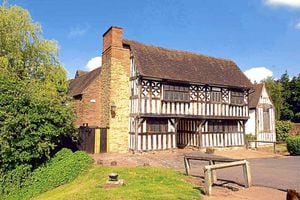
During its years as a hostelry, tales have cropped up about poltergeists hurling glasses behind the bar and apparitions galore which include the ghost of a cat.
In 2012, TV presenter Michaela Strachan visited the site to film an episode of Great British Ghosts.
Chris Arnold, a paranormal investigator who runs the Eerie Evenings ghost tours, said he held numerous events at the manor between 2005 and 2008.
He says his team witnessed balls of light floating across a room at the house, heavy footsteps belonging to no-one, the full apparition of a monk, exploding light bulbs and slamming doors.
"All of these things happened to members of our staff not only during the event but while setting up at the start of the event and clearing away at the end, once the guests had gone home, which in our experience is very unusual."
He says people started experiencing strange phenomena from the moment it opened as a pub in 1961.
"For example, several landlords and landladies got so used to hearing their name called when they were alone in the building that it no longer bothered them," says Chris.
"Doors opening and closing all by themselves, and objects being moved by unseen hands became everyday occurrences for the building's inhabitants."
Giffard Arms, Wolverhampton
Also apparently haunted is the Giffard Arms, in Victoria Street, Wolverhampton. There are believed to be a number of ghosts which haunt the pub, in Victoria Street.
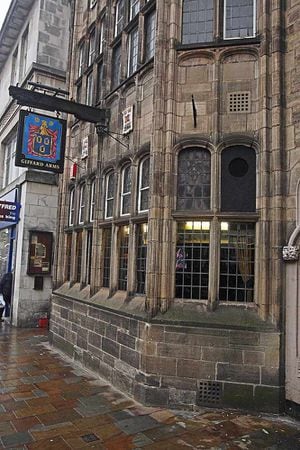
One of them is believed to be the spirit of Anne Horton, whose ghost has been reportedly seen following young men back from the pub at night.
She is said to have been a prostitute who took her own life on the site in the early 20th century. The pub was built in 1922, but the Giffard family had owned a house on the site prior to that.
There have been other sightings of a girl around the age of 11, who is often seen playing with wooden play bricks in the main bar, in the middle seat by the back window. She is also reported to have been seen in the doorway in the kitchen of the upstairs flat.
Another sighting is of a man, who is believed to be an old landlord named John, who has been seen locking up the pub at night.
He walks right through the actual bar area as it wasn't there when he had the pub. There have even been reports about a dog haunting the bar.
Over the years there have been stories of glasses moving and exploding for no apparent reason, cold spots in certain places in the pub, doors closing, strange noises and smells.
The most haunted part of the building is said to be the oak-panelled 'Dark Room', so-called because the windows have various stained glass bearing the Giffard family associations with the site. Several members of staff have refused to go into the room unless there is somebody else with them.
Bentley Hall, near Willenhall
Bentley Hall, near Willenhall, was demolished in 1929 amid fears that its walls were collapsing due to mineworkings in the area. But while the house is long gone, it seems that a guest from the 17th century still inhabits the former country estate.
"It is said that a cavalier is supposed to haunt the site," says Mike Pearson, author of The Little Book of the Black Country.
"The hall is one of the places King Charles II hid in during his escape from the Battle of Worcester in 1651."
Today, a cairn marks the spot where the hall once stood, and during the 1960s there were many reports of a friendly ghost, affectionately named Charlie by locals, seen at the cairn, 'wearing a long cloak and having the appearance of a cavalier'.
According to Anthony Poulton Smith, author of Black Country Ghosts, several members of the choir at Emmanuel Church claimed to have seen him, along with several bell ringers.
"He was reported to have been particularly active during December, 1966."
Rev Raymond Wilcox claimed to have seen him, as did verger Mrs Pallett.
Anthony adds: "He seemingly only ever interacts with ladies, with a jovial and gentlemanly manner, doffing his hat, hoping with an impressive bow to send them into a swoon."
However, as stories about the ghost developed into a media frenzy, with reporters carrying out nightly vigils, Mr Wilcox admitted that he had actually made up his supposed sightings.
Yet the stories about Charlie refused to go away.
A few weeks after the vicar tried to dispel the stories, a former employee from the hall came forward with more stories about the ghost stalking its rooms.
Haden Hill House, Cradley Heath
Haden Hill House in Cradley Heath is another building which is said to have a ghostly past.
The house dates back to Tudor times and Mike Pearson, author of the Little Book of the Black Country, says it has seen its share of deaths over the years.
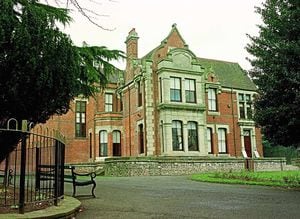
Eleanor — or possibly Elaine — of Hayseech Mill is said to wander the building looking for her over, a monk from Halesowen Abbey.
Mike, who is also editor of the Blackcountryman, says legend has it that they were planning to elope, but met a disturbing end when an underground passage between the house and the abbey was bricked up.
"Both ghosts have been seen," he says. "He is walking around praying, Elaine is crying and wringing her hands."
He adds that another spirit, dressed in Victorian clothing, is said to wander the gardens of Haden Hill House.
Referring to the powerful 19th century industrialist who built the present Haden Hill House in 1878, Mr Pearson asks: "Could this be George Alfred Haden Best?
"No-one knows."
Author Anne Bradford, who has written numerous books about ghost stories over the years, also records tales of a mysterious figure walking the house.
"There have long been stories about a white lady seen on the stairs, in the former dining room and walking across the waters of the southern pond in the park," says Bradford.
"Legend does not tell us who she was, but her water-walking activities suggest that she used to pass that way before it was created and refuses to be diverted."
Bradford says she may well be more closely associated with the original Tudor Haden Hall (COR) — which Haden-Best retained as an annexe for his aunt — than the Victorian Haden Hill House.
Dudley Castle
One of the most famous is the Grey Lady, believed to be the ghost of a woman named Dorothy Beaumont.
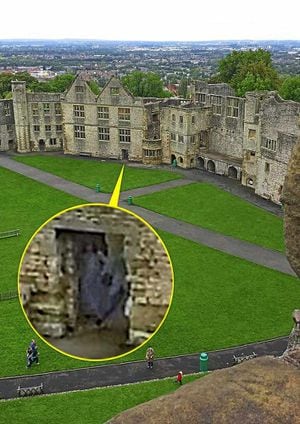
She lived at the castle and gave birth to a daughter who died. She herself asked to be buried beside her daughter and for her husband to attend her funeral.
Her requests were not carried out and she is reputed to still roam the grounds of the castle.
Another much-reported ghost at Dudley Castle is that of a Civil War drummer boy. He was killed during a skirmish by a single bullet from one of the most inaccurate firearms invented, the 17th Century musket.
According to the Haunted Rooms website he's heard many times at night, banging away on his drum in various drum rolls as if in battle.
However, those of superstitious disposition are advised to give him a wide berth. It is deemed as bad luck to hear or see him due to the unfortunate nature in which he died.
The most haunted location in the castle is thought to be the chapel undercroft. In an ancient room there is a stone coffin, that is believed to have once held the body of one of the most castle's most feared Lords, John Somery. On many occasions, people have reported seeing legs beside the coffin, believed to be that of John himself.
Other reports include people having the feeling of their clothes being tugged at, and their bodies prodded. One one particular occasion, the little girl flipped over a chair during a paranormal investigation.
Himley Hall
Himley Hall, which in its 1920s and 30s heyday was a popular weekend retreat for royalty, provides fertile grounds for speculation about the identity of the ghosts said to haunt it.
But Alan Peace, who has witnessed five car accidents at the hall's main gate caused by a mysterious figure lurking in the road, believes the individual who has caused so much mayhem may be somewhat less glamorous.
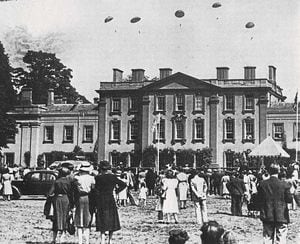
"From their description, and piecing together various bits of information, we surmise this was a senior servant girl who lived at the farm and worked at Himley Hall during the early Victorian period," he says.
"We also have a soldier from Charles I's army. King Charles stayed here in 1645, before the Battle of Naseby."
Shortly after the army set up base, a mutiny broke out, and the leader was court-martialled, hanged and buried at the site.
Ancient High House, Stafford
There have been many reports of strange happenings at Stafford's Ancient High House, in Greengate Street.
On several occasions, the heavy oak doors on the top floor of the building have been seen to open and close by themselves.
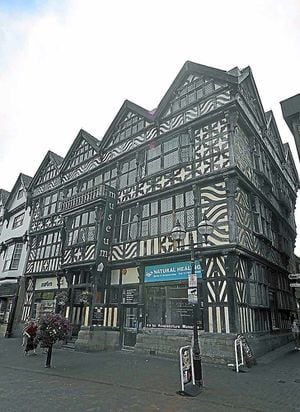
Once, when this happened, a female member of staff on duty noticed a tall, dark silhouette in the doorway. On further investigation, she discovered she was the only person on that floor.
In the Victorian room on the second floor there have been many notorious ghostly sightings. People have been startled by sightings of an elderly woman sitting in the rocking chair and a young girl in Victorian dress standing in the middle of the room.
Staff also say there is always a chilling temperature in this room, even though the heating is on full blast.
During the 1960s a party of American visitors claimed to have been guided around the house by the resident shopkeeper. But when they returned with friends, they discovered it was an uninhabitable ruin.
When shown a picture of William Marson, who had kept shops within the High House in 1890, the Americans claimed he had been their guide.
The house was built in 1595, and in the past it has been used as a residential home, a school and an antique shop, but it is probably its role during the English Civil War which provides the most interesting talking point in explaining the phenomena.
It is where King Charles I and his nephew stayed in 1642, at the start of the war, and the following year, when Stafford was taken over by the Roundheads, it became a prison for royalist officers.
Cannock Chase
Recent reports of the 'black-eyed girl' on Cannock Chase have led to a resurgence in speculation about strange activities around the beauty spot.
Only this month, Christine Hamlett reported seeing a child with 'coal-black pits for eye sockets' during a visit to the chase. Paranormal researcher Lee Brickley has spent the past 18 months collecting stories about new sightings of the mysterious figure, some 30 years after she was first spotted.
Lee says there have been hundreds of reports about UFOs and big cats on the Chase over the years.
"I don't know what it is about the place," he says.
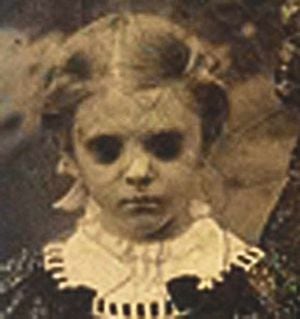
"There's an iron-age hill fort site, Castle Ring, at its highest point, thought to have been occupied around AD 50 by the Celtic Cornovii tribe, who are supposed to have carried out satanic rituals and human sacrifices. Maybe it's something to do with the ancient vibes."
In July last year, 26-year-old Lee published his book UFOs Werewolves & The Pig-Man: Exposing England's Strangest Location – Cannock Chase.
The book contained just one reported sighting of the black-eyed girl, but Lee says since that time he has been contacted by several people making similar claims.
For example, in September a man walking his dog with his wife near Stile Cop, was disturbed by the sound of giggling from a little girl.
"To our amazement, a child, no taller than one metre in height appeared out of nowhere further up the path in front of us," the man said.
"We stopped in our tracks after noticing her eyes had no colour. Her head was tilted to the side in much the same way it would appear if she had been hung. She stared at us for around five minutes before running away into a dense area of trees. My wife wanted to follow her, but I was having none of it."
Starving Rascal, Stourbridge
Legend has it that sometime around the 1870s, a tramp came to the door of this pub at the on the corner of Collis Street and Brettell Lane in Amblecote, and asked for food and shelter.
The landlord at the time refused, and the next morning the beggar was found dead on the doorstep.
The story goes that the pub has been cursed by the vagrant ever since, with dark shadows hanging over its walls.
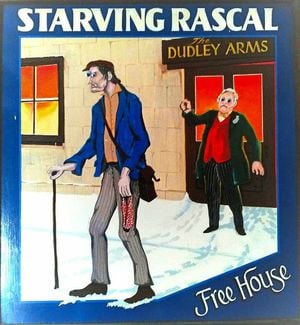
The pub, which was originally called The Dudley Arms, changed its name in 1977 to reflect the tale, and a new sign was made showing the beggar and his disgruntled ghost.
David Taylor, co-author of Beer and Spirits, a book about haunted pubs, has been investigating paranormal activity across the West Midlands for more 26 years.
He says: "The pub is always a good one for hot and cold spots as well as shadows on the walls. We've heard of bottles coming off the shelves and shadowy figures down the cellar – it is a fascinating place."
Landlord Steve Robinson took over the pub eight years ago.
He says: "Having been here a while I have certainly seen or heard things which I cannot explain.
"I think it is great to have a pub with so much history which is also popular with the public. We're proud of the pub's folklore."
Northycote Farm, Wolverhampton
In 1651, a representative of the fugitive King Charles II, on the run after the crushing defeat at the battle of Worcester, dropped in at Wolverhampton's Northycote Farm, appealing for refuge for the King.
However, her husband was away from home at the time — possibly himself fighting in the civil war — and the farmer's wife apparently turned down request, resulting in Charles fleeing to Moseley Old Hall.
It is said that, possibly as a gesture of remorse, the farmer's wife sent an attractive young maid to attend to the King during his brief stay in Wolverhampton. After the dalliance, the maid left Moseley Old Hall, but was never seen again.
However, it is not the unfortunate maid who is said to haunt the farm, but rather her grief-stricken lover, a farmhand who died from a broken heart, and is said to return to the farm, searching for his lost love.
In the summer of 1996, the farm's site manager was said to be standing in its blue room when his wife complained of feeling cobwebs brushing across her face.
The manager looked across to where she was standing and saw what appeared to be a shadow next to his wife, but one that didn't move when she did.
Checking the room later, they found no cobwebs.
Also, during a craft fair, a trader in the parlour claims to have heard footsteps cross the length of the floor above her, closely followed by the sound of somebody falling down. Somewhat concerned, the trader mentioned the sounds to a member of staff who immediately investigated. The stairs leading to the upper floor had been securely closed to prevent members of the public gaining access, and there was no sign whatsoever of anyone having been in the area.
Take a look here (if you dare) for more haunted sites in the wider West Midlands.

